 Website:
Randox Laboratories
Website:
Randox Laboratories
Group: Randox
Catalog excerpts
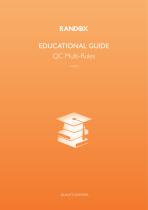
EDUCATIONAL GUIDE QC Multi-Rules QUALITY CONTROL
Open the catalog to page 1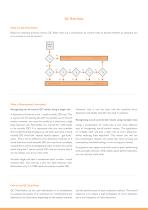
QC Multi-Rules What are QC Multi-Rules? Based on statistical process control, QC Multi-rules use a combination of control rules to decide whether an analytical run is in-control or out-of-control. Control Data What is Measurement Uncertainty? Recognising out-of-control QC results using a single rule A laboratory favourite is the 1 result outside 2SD rule. This is a great rule for alerting lab staff to possible out-of-control events, however, you must be careful as it does have a high false rejection rate. Remember, it is normal for 1/20 results to be outside 2SD! It is important that you...
Open the catalog to page 2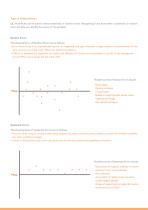
Types of Analytical Errors QC Multi-Rules can be used to detect systematic or random errors. Recognising if you have either a systematic or random error can help you identify the source of the problem. Random Errors The characteristics of Random Errors are as follows: • Error which varies in an unpredictable manner (in magnitude and sign) whenever a large number of measurements of the same quantity are made under effectively identical conditions. • Difficult to eliminate but repetition can reduce the influence of random errors.between ± one SD of the average and around 95% of all readings...
Open the catalog to page 3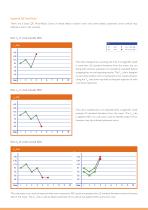
Explained QC Multi-Rules There are 6 basic QC Multi-Rules. Some of these detect random error and some detect systematic error (which may indicate a bias in the system). Rule 12S (1 result exceeds 2SD) This rule is designed as a warning rule only. If a single QC result is more than ±2 standard deviations from the mean, this run along with previous analytical runs should be evaluated before accepting the run and reporting results. The 12S rule is designed to warn that random error or systematic error may be present. Using the 12S rule alone may lead to frequent rejection of valid runs (false...
Open the catalog to page 4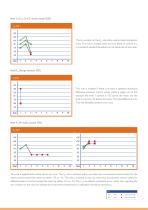
Rule 2 of 32S (2 of 3 results exceed 2SD) This is a variation of the 22S rule and is used to detect systematic error. The rule is violated when any two levels of control in a run exceed 2 standard deviations on the same side of the mean. Rule R4S (Range exceeds 4SD) This rule is violated if there is at least 4 standard deviations difference between control values within a single run. In this example the level 1 control is +2S above the mean and the level 2 control is -2S below the mean. The total difference is 4s. This rule identifies random error only. Rule 41S (4 results exceed 1SD) This...
Open the catalog to page 5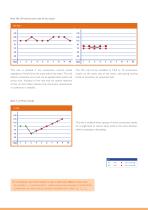
Rule 10x (10 results same side of the mean) This rule is violated if ten consecutive control results regardless of level fall on the same side of the mean. The rule detects systematic error and can be applied both within and across runs. Violation of this rule may not require rejection of the run but rather indicate that instrument maintenance or calibration is needed. The 10x rule can be modified to 7,8,9 or 12 consecutive results on the same side of the mean, each giving varying levels of sensitivity to systematic bias. This rule is violated when a group of seven consecutive results for a...
Open the catalog to page 6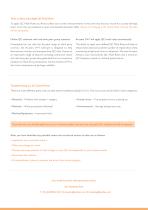
Tools to Assist Labs Apply QC Multi-Rules To apply QC Multi-Rules you firstly collect your control measurements in the same way that you would for a Levey-Jennings chart. From this you establish a mean and standard deviation (SD). All you are changing is the control limits and how the data will be interpreted. Online QC software with real-time peer group statistics Acusera 24•7 will apply QC multi-rules automatically Compatible for use with the Acusera range of third party controls, the Acusera 24•7 software is designed to help laboratories monitor and interpret their QC data. Access to an...
Open the catalog to page 7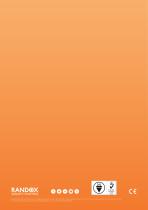
Copyright © 2019 Randox Laboratories Ltd. All rights Reserved. VAT number: GB 151682708. Product availability may vary from country to country. Some products may be for Research Use Only. For more information on product application and availability, please contact your local Randox Representative.
Open the catalog to page 8All Randox Laboratories catalogs and technical brochures
-
LT735 Vivalytic Overview
32 Pages
-
Acusera New Controls
8 Pages
-
Acusera 24.7
24 Pages
-
Acusera Third Party Controls
108 Pages
-
Acusera SMART Controls
12 Pages
-
Company Overview
40 Pages
-
Reagents Brochure
64 Pages
-
sdLDL-C
8 Pages
-
RX SERIES ANALYSER OVERVIEW
24 Pages
-
RX modena
20 Pages
-
RX misano
20 Pages
-
RX Daytona Plus
20 Pages
-
Rx Imola
20 Pages
-
RX Monaco
20 Pages
-
2024 Product List
64 Pages
-
LT107 Evidence Investigator
32 Pages
-
VeraSTAT-V
16 Pages
-
LT033 RIQAS Explained
64 Pages
-
VERASTAT
16 Pages
-
Endocrine Array
4 Pages
-
Cerebral Arrays
4 Pages
-
Thyroid Arrays
4 Pages
-
Respiratory Multiplex Array
8 Pages
-
LT253 Molecular Diagnostics
20 Pages
-
LT367 FH Array Brochure
4 Pages
-
The role of EQA in QC
8 Pages
-
Basic QC Stastics
8 Pages
-
Commutability Guide
4 Pages
-
How to measure uncertainty
8 Pages
-
ISO 15189 Educational Guide
8 Pages
-
Troubleshooting QC Errors
8 Pages
-
Qnostics
52 Pages
-
Adiponectin LT519
28 Pages
-
Specific Proteins
40 Pages
-
Linearity sets
12 Pages
-
Antioxidants
16 Pages
-
Cardiology & Lipid Testing
28 Pages
-
Diabetes Portfolio
28 Pages
-
Total Bile Acids
4 Pages
-
VIVALYTIC
30 Pages
-
RANDOX DISCOVERY
36 Pages
-
HbA1c
2 Pages
-
Preparing QC
1 Pages
-
Point of Care Testing
12 Pages
-
LT394 Using QC Multirules
1 Pages
-
Guide to running QC
1 Pages
-
Tumour Marker Arrays
4 Pages
-
Which QC is the Right QC
8 Pages
-
How often is right for QC
6 Pages
-
Cardiac Risk Multiplex Array
4 Pages
-
LT241 Metabolic Array MAY15
8 Pages
-
KRAS / BRAF / PIK3CA Array*
4 Pages
-
Custom Arrays for Biochip
12 Pages
-
LT169 Cardiac Array
4 Pages
Archived catalogs
-
ACUSERA
108 Pages
-
Evidence Evolution
28 Pages
-
Evidence
16 Pages
-
Metabolic Syndrome Arrays
8 Pages
-
STI Multiplex Array
8 Pages
-
Molecular Testing
16 Pages
-
Evidence Investigator
20 Pages
-
Fertility Array
4 Pages
-
Rx Daytona
16 Pages
-
Evidence Investigator
16 Pages
-
Evidence
16 Pages





















































































